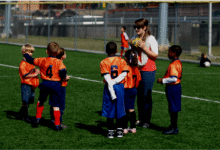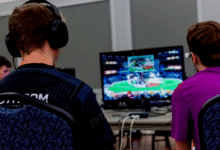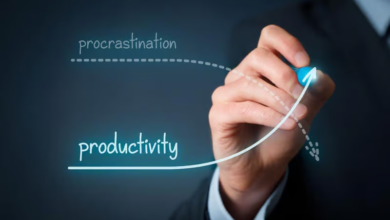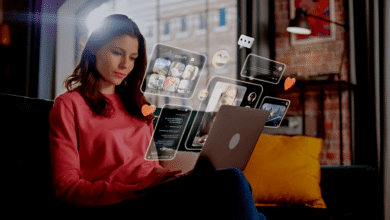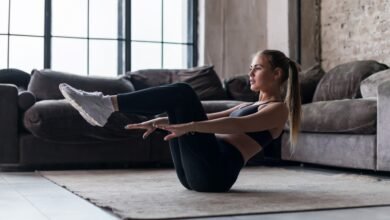Kinesthetic Learners: The Best Study Tips for Visual, Auditory
Discover the best study tips tailored for Kinesthetic Learners and others. Learn how to boost retention and academic success effectively.
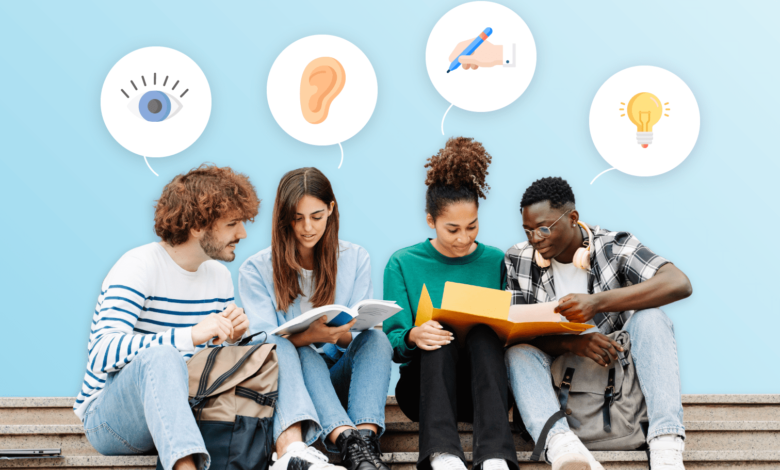
Kinesthetic Learners thrive in environments that involve physical activity, hands-on experiences, and practical applications. Unlike visual or auditory learners who absorb information through images or sounds, kinesthetic learners engage best when actively participating in the learning process. Understanding how this learning style differs can help students create study techniques tailored to their strengths, ensuring better retention and improved academic performance.
In this guide, we explore effective study strategies for visual, auditory, and kinesthetic learners. Whether you identify strongly with one category or blend across styles, mastering these techniques can transform your learning experience. Special emphasis is placed on strategies for kinesthetic learners to empower them to succeed in any academic or professional setting.
Understanding Kinesthetic Learners
Kinesthetic learners excel when they are physically engaged in their learning process. Activities such as building models, conducting experiments, or using gestures make concepts more memorable.
Key Traits of Visual Learners
Visual learners process information through images, charts, and written text. These individuals often rely on color coding, diagrams, and visual storytelling.
The Role of Auditory Learning in Education
Auditory learners absorb information best through listening. Activities like group discussions, lectures, and podcasts suit their learning style.
Creating an Effective Study Environment for Kinesthetic Learners
Kinesthetic learners are individuals who learn best through hands-on experiences and physical movement. For these learners, having a space that accommodates movement is essential for effective learning. When there is enough room to move around, they can engage more naturally with the material. A setting that provides various tools and resources for interactive learning not only keeps their interest but also helps them maintain focus on the tasks at hand. This type of environment encourages exploration, experimentation, and active participation, which are crucial for kinesthetic learners to absorb and understand new concepts. A spacious area that promotes these activities is ideal, allowing learners to fully immerse themselves in the educational experience while staying attentive and engaged.
The Importance of Active Learning for Kinesthetic Learners
Active learning involves engaging with material through physical activities like role-playing or building models. This keeps kinesthetic learners motivated and attentive.
Incorporating Movement into Study Sessions
For kinesthetic learners, movement boosts retention. Walking while reciting notes or using gestures during explanations enhances understanding and memory.
Visual Learning Techniques for Retention
Using mind maps, charts, and graphs can help visual learners structure and retain information effectively. This visual framework simplifies complex topics.
Auditory Learning Strategies for Deep Understanding
Recording lectures, participating in discussions, or using audiobooks are excellent ways for auditory learners to reinforce their learning.
Hands-On Projects for Kinesthetic Learners
Kinesthetic learners thrive on projects that require practical application. Science experiments, crafting prototypes, or creating presentations make abstract ideas tangible.
Leveraging Technology for Kinesthetic Learners
Interactive apps and virtual reality tools are ideal for kinesthetic learners. These technologies simulate real-world scenarios, enhancing engagement.
Combining Styles for Hybrid Learners
Some learners display traits of multiple learning styles. Combining methods such as audio-visual aids and hands-on activities ensures holistic understanding.
Time Management Tips for Kinesthetic Learners
Kinesthetic learners may struggle with traditional study routines. Breaking study sessions into active intervals improves focus and prevents boredom.
Group Study Dynamics for Different Learners
Group study sessions work well when learning styles are considered. Kinesthetic learners can lead interactive tasks, while auditory and visual learners contribute their strengths.
Study Techniques for Complex Subjects
Kinesthetic learners can simplify complex topics by physically representing concepts, such as creating models or enacting processes.
Memory Aids Tailored to Kinesthetic Learners
Using flashcards, physical objects, or real-life scenarios helps kinesthetic learners memorize and recall information effectively.
Visualizing Goals for Visual Learners
Creating vision boards and drawing flowcharts are effective methods for visual learners to arrange their goals and monitor their progress. A vision board is a collage of images, words, and quotes that represents what a person wants to achieve or manifest in their life. By seeing these visual representations daily, individuals can stay focused on their aspirations and keep their motivation high. It allows them to visualize the end result and reminds them of the steps they need to take to reach their objectives.
Similarly, flowcharts serve as a structured way to map out ideas and tasks. By organizing thoughts visually, learners can break down complex goals into smaller, more manageable steps. This helps them understand the path they need to follow, making it easier to track their advancements over time. Both vision boards and flowcharts cater to the learning style of those who grasp information better through visuals. They not only enhance clarity but also provide a sense of accomplishment as each milestone is completed. Overall, incorporating these techniques into goal planning helps individuals stay organized and maintain a clear vision of their journey toward success.
The Role of Music for Auditory Learners
Soft background music or rhythm-based mnemonics can enhance focus for auditory learners while reducing distractions.
Challenges Faced by Kinesthetic Learners
Kinesthetic learners, who learn best through hands-on experiences and active participation, often face significant challenges in traditional classroom settings. In these environments, the focus tends to be on lectures, reading assignments, and other forms of passive learning that do not cater to their unique learning needs. As a result, these students may struggle to remain focused and engaged, leading to frustration and a lack of motivation. To overcome these difficulties, it is essential for educators and learners alike to develop innovative strategies that promote active involvement and interaction in the learning process. This may include incorporating more physical activities, group projects, or interactive lessons that allow kinesthetic learners to move around and engage with the material in a way that resonates with their learning style. By embracing these approaches, it becomes possible to create a more inclusive educational environment that supports the needs of all learners, especially those who thrive through movement and hands-on activities.
Empowering Educators to Support Kinesthetic Learners
Educators have the ability to create engaging and effective activities that cater specifically to kinesthetic learners, who thrive on hands-on experiences. This can include designing interactive laboratory sessions where students can conduct experiments and observe scientific principles in action. Such labs allow learners to physically manipulate materials, making the learning process more tangible and memorable.
In addition to interactive labs, planning field trips can offer valuable real-world experiences that are crucial for kinesthetic learners. By taking students outside the classroom, educators can provide them with opportunities to explore different environments, whether it is a museum, a nature center, or a historical site. These excursions not only facilitate active engagement but also help students connect theoretical knowledge with practical application.
Furthermore, incorporating tactile lessons into the curriculum can significantly benefit students who learn best through touch and movement. This may involve activities like building models, using manipulatives in math, or conducting art projects that require creative expression. By allowing kinesthetic learners to use their hands and bodies in the learning process, educators can enhance understanding and retention of the material taught in class. Overall, by designing varied activities such as interactive labs, field trips, and tactile lessons, educators can effectively address the unique learning needs of kinesthetic learners, helping them to succeed in their educational journey.
Long-Term Benefits of Understanding Learning Styles
Understanding your personal learning style is crucial for achieving academic success and fostering a love for lifelong learning. Learning styles can be classified into three main categories: kinesthetic, auditory, and visual. Each style represents a different way of absorbing and processing information. Kinesthetic learners often find that they learn best through hands-on experiences and physical activities, allowing them to engage directly with the material. Auditory learners typically excel when they listen to lectures, discussions, or even music, as they retain information more effectively through sound. Visual learners, on the other hand, grasp concepts better when they can see them represented through charts, graphs, or images.
When individuals identify and understand their preferred learning style, they can tailor their study habits and educational experiences to align with these preferences. This alignment enhances not only their performance in school but also their ability to retain and use knowledge in real-world situations. By focusing on their strengths, students can engage more deeply with the subject matter and find greater enjoyment in their learning process. Moreover, recognizing one’s learning style is not just important for academic achievement during school years; it also lays a foundation for continued learning throughout life. Individuals who are aware of how they learn best are more likely to seek out opportunities to grow and develop new skills, ultimately leading to enhanced personal and professional success.
Read More: The Best Study Tips for Visual, Auditory, and Kinesthetic Learners
Conclusion
Adapting study techniques to your learning style transforms how you engage with information. Kinesthetic learners, in particular, benefit from active, hands-on methods that make studying more enjoyable and productive. Recognizing the nuances of each learning style—visual, auditory, or kinesthetic—empowers students to create personalized strategies that cater to their strengths.
In the journey toward academic excellence, understanding and embracing your unique learning preferences can make all the difference. By integrating these strategies, students can overcome traditional learning challenges and unlock their full potential. Education is not one-size-fits-all, and with the right approach, every learner can thrive.
FAQs
1. What are the traits of kinesthetic learners?
Kinesthetic learners prefer hands-on activities and physical engagement. They often excel in interactive and practical learning environments.
2. How can kinesthetic learners improve their focus?
Incorporating movement, using tactile tools, and engaging in active learning methods helps kinesthetic learners stay focused and retain information.
3. Are kinesthetic learners disadvantaged in traditional classrooms?
Traditional classrooms often prioritize auditory and visual methods, but kinesthetic learners can adapt by integrating active techniques into their studies.
4. What are some tools that support kinesthetic learning?
Tools like interactive apps, virtual reality simulations, and physical models enhance the learning experience for kinesthetic learners.
5. Can a person have multiple learning styles?
Yes, many individuals blend traits of visual, auditory, and kinesthetic learning styles, benefiting from a mix of study techniques.
